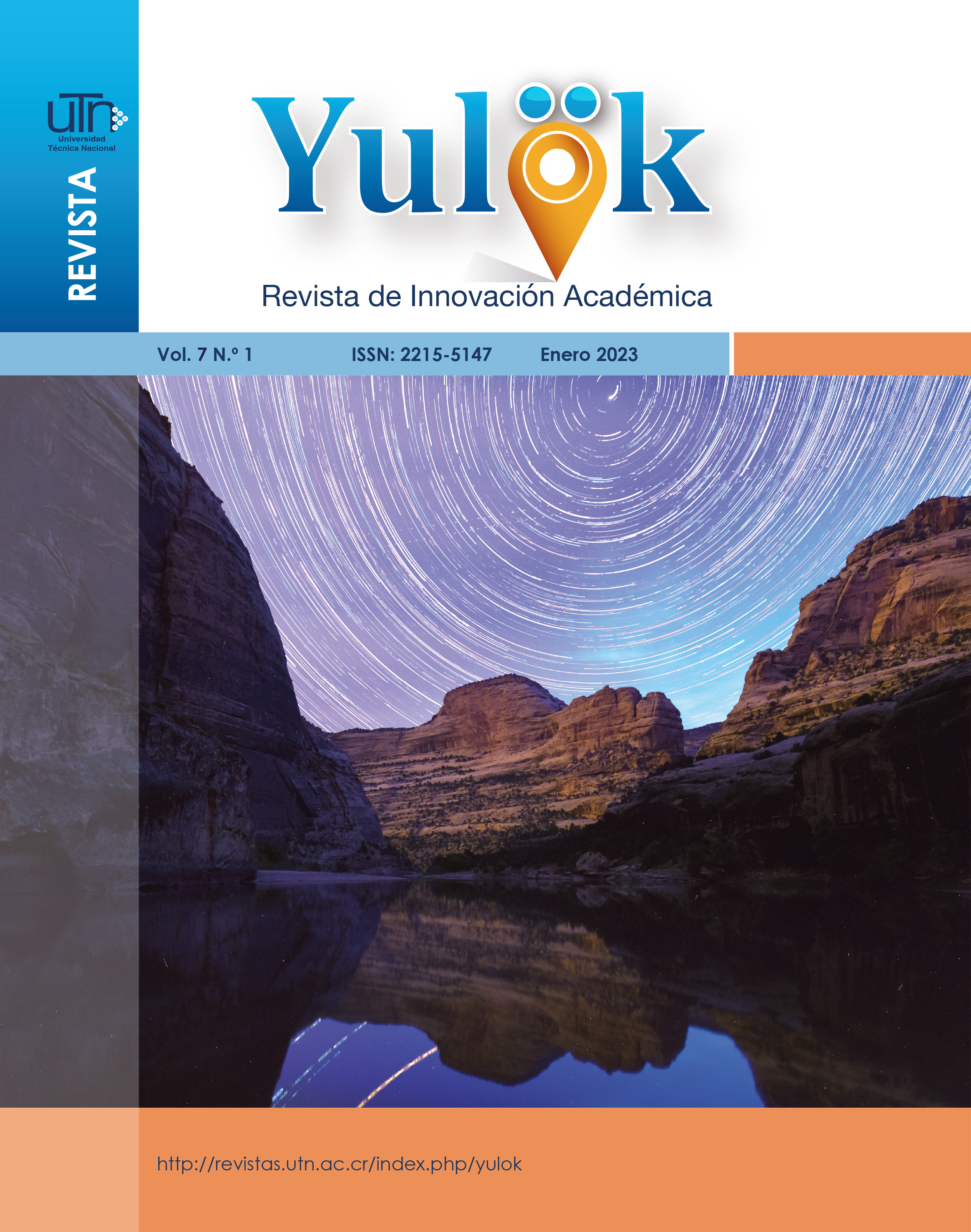Roadkills of wild mammals in an agro-landscape of Balsa de Atenas, Costa Rica
Main Article Content
Abstract
Roads are a significant threat to wildlife, in fact, many mammals are killed on Costa Rican roads each year, but the impact on the mammal communities is not yet understood. Objective. To determine the incidence of roadkill of wild mammals on Route 720 and its relationship to topographic variables of the road in Concepción de Balsa de Atenas, Alajuela, Costa Rica in the last 7 years (2015-2022). Methods: We analyzed road kills of mammals in route 720, Concepción de Balsa de Atenas, Alajuela, from 2015 to 2021. The highest incidence of road killings occurred in a section of a straight segment and open curves of the road, where the road is close to living fences which are frequently used by wildlife as cover and corridors to travel. Results: In total, 12 individuals were recorded killed by being run over, the species with the highest frequency of deaths on the roads was the common opossum (Didelphis marsupialis), which is consistent with other studies. Conclusion. It is necessary to carry out studies in similar rural agro-landscapes that are crossed by roads, since these landscape mosaics of different land uses are important for the maintenance and persistence of wildlife.
Article Details
Section

This work is licensed under a Creative Commons Attribution-NonCommercial-ShareAlike 4.0 International License.
Todos los artículos publicados están protegidos con la licencia Creative Commons Atribución-NoComercial-CompartirIgual 4.0 Internacional
![]()
How to Cite
References
Abraham, J.O. Mumma, M.A. (2021). Elevated wildlife vehicle collision rates during the COVID 19 pandemic. Scientific Reports 11, 20391
Alfaro, V.C. Quesada, F.D. (2016). Registro de mamíferos silvestres atropellados y hábitat asociados en el cantón de la fortuna, San Carlos, Costa Rica. Biocenosis (1-2): 49 -58
Arroyave, M. del P., Gómez, C., Gutiérrez, M. E., Múnera, D. P., Zapata, P. A., Vergara, I. C., Andrade, L. M., & Ramos, K. C. (2013). Impactos de las carreteras sobre la fauna silvestre y sus principales medidas de manejo. Revista EIA, 3(5), 45–57. Recuperado a partir de https://revistas.eia.edu.co/index.php/reveia/article/view/146
Artavia, A. Jiménez, M. Salinas, A.M. Pomareda, E. Gamboa, D.A. Huezo, E.A. (2015). Registro de mamíferos silvestres en la sección de la ampliaciación de la Ruta 32, Limón, Costa Rica. Brenesia 83-84, 37- 46
Atlas de Costa Rica. (2014). Repositorio TEC. Obtenido de Atlas de Costa Rica.
Benítez – López, A. Alkemade, R. Verweij, P.A. (2010). The impacts of roads and other infrastructure on mammal and bird populations: A meta-analysis. Biological Conservation 143:1307-1316.
Carvajal Sánchez, J.P (2014). Composición y riqueza de las comunidades de aves, murciélagos y escarabajos coprófagos asociados a agro-paisajes y áreas protegidas de un bosque tropical seco (norte de Costa Rica), (Doctorado). Universidad de Salamanca, Salamanca España.
Cervantes-Huerta, R., Escobar, F., García-Chávez, J.H., & González-Romero, A. (2018). Atropellamiento de vertebrados en tres tipos de carretera de la región montañosa central de Veracruz, México. Acta Zoológica Mexicana 33(3), 472-481.
Cervantes-Huerta, R., & Durán-Antonio, J. (2022). Seasonal variation of mammal roadkill hotspots in the Sierra Madre Occidental, México. Therya notes.
De La Ossa Nadjar, O. De la Ossa, V.J. (2013). Fauna Silvestre Atropellada En Dos Vías Principales Que Rodean Los Montes De María, Sucre, Colombia. Revista Colombiana De Ciencia Animal - RECIA, 5(1), 158–164. https://doi.org/10.24188/recia.v5.n1.2013.481
De La Ossa-V., J., & Galván-Guevara, S. (2015). Registro de mortalidad de fauna silvestre por colisión vehicular en la carretera Toluviejo - ciénaga La Caimanera, Sucre, Colombia. Biota Colombiana, 16(1). Recuperado de http://revistas.humboldt.org.co/index.php/biota/article/view/368.
Forman, R. Alexander, L. (1998). Roads and their major Ecological effects. The Annual Review of Ecology, Evolution, and Systematics, 29, 31-207.
Filius, J. Yntze van der Hoek. Jarrín, P. Pim van Hooft. (2020). Wildlife roadkill patterns in a fragmented landscape of the Western Amazon. Ecology and Evolution 10:6623-6635.
González, A., Hidalgo, M.G. Peña, M.A. González, A. (2022). Mammal use of some crossing structures in a Federal Highway in Jalisco, México. Therya notes. Vol. 3: 59-65.
Harvey, C. Medina, D. Sánchez, S. Vilchez, B. Hernández, J. Sáenz, J. Maes, F. Casanoves, F. Sinclair, L. (2006). Patterns of animals diversity in different forms of tree cover in agricultural landscape. Ecological Applications 16:1986–1999.
Medina, A. Harvey, C.A. Sánchez, D. Vilchez, S. Hernández, B. (2007). Bat Diversity and Movement in a Neotropical Agricultural Landscape in Matiguás, Nicaragua. Biotropica 39:120-128.
Monge, J. (1996). Vertebrate mortality in tropical highways: The Costa Rican case. Vida Silvestre Neotropica, 5(2), 154-156.
Monge, J. (2018). Road kills in tropical ecosystems: a review with recommendations for mitigation and for new research. Revista de Biología Tropical, 66, 722–738.
Monge, M. Saénz, J. C. (2022). Drainage culverts as a measure to avoid mammal roadkills in Costa Rica: the case of Dasyprocta punctata. Therya Notes 3:66-69.
Monroy, M.C. De la Ossa, A. De la Ossa, V. (2015). Tasa de atropellamiento de fauna silvestre en la vía San Onofre – María la baja, Caribe Colombiano.
Rojas, E. (2011). Atropello de vertebrados en una carretera secundaria en Costa Rica. Cuadernos de Investigación UNED, 3 (1), 81- 84.
Sánchez, J. Ramírez, C. Sauzo, I. (2013). Las carreteras como una fuente de la mortalidad de la fauna silvestre de México. CONABIO, 12-16.
Sarukhán, J. (2017). Capital natural de México, síntesis (actualizada a 2017): evaluación del conocimiento y tendencias de cambio, perspectivas de sustentabilidad, capacidades humanas e institucionales. Comisión Nacional para el Conocimiento y Uso de la Biodiversidad. México City, México.
Vik, R. Christensen, P. Amundsen, A. (2004). Speed and road accidents; an evaluation of the Power Model. Institute of Transport Ecomunistic TOI, Osalo.

